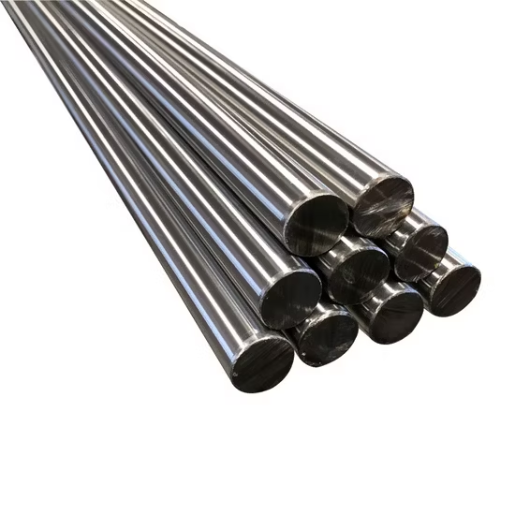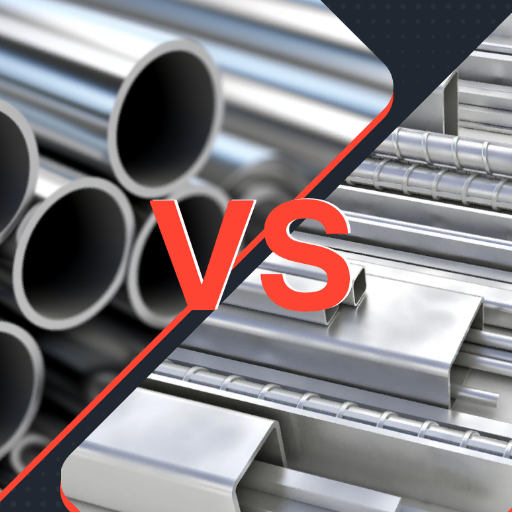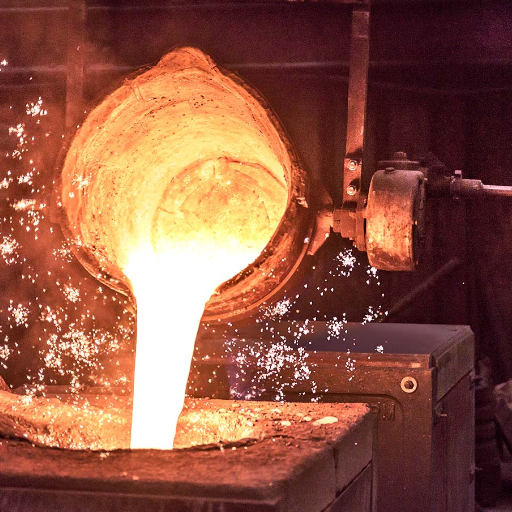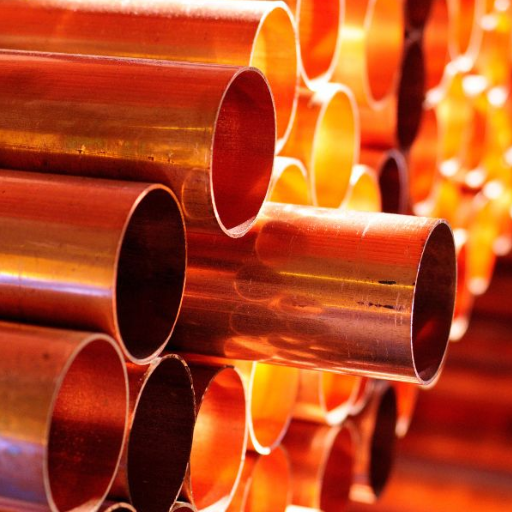One thing I love about the conductivity of aluminum is how uncomplicated it is. In this blog post, we will discuss the astonishing, yet simple, practicality of aluminum as an electrolyte, along with the possible limitations within its application. By the end of this article, you will have sufficient knowledge of the properties of aluminum’s conductivity, together with its purpose in any electrical installation. So let’s set out for the grand exploration of aluminum’s ability to conduct electricity.
How Does Aluminum Conduct Electricity?
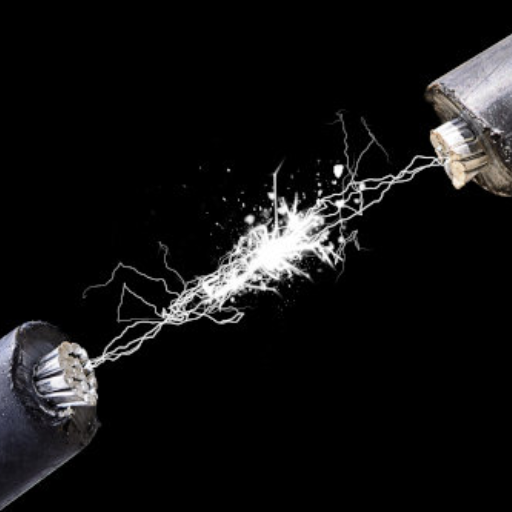
Aluminum is made up of free electrons and has a distinct atomic structure which enables it to carry current. In solid form, aluminum adopts a crystalline lattice configuration where all the aluminum atoms are interconnected. This configuration has some of the valence electrons in a loose binding which lets the electrons skip around within the structure. These mobility electrons are the main root of the electrical conductivity of aluminum.
When a voltage is applied to aluminum and copper connectors, the free electrons in the connectors derive energy and start to drift toward the region of the electric field. The flow of electrons forms an electric current and as such electricity can be conducted through the aluminum material.
Aluminum in comparison to copper which is also one of the most applied electrical conductors is slightly more conductive. But that has not been a deterrent because many electrical jobs can afford its lower side. When considering which one to use, the cost of the materials, its weight and what its performance expectations need to do will be determining factors as to whether to choose aluminum or copper.
Understanding Electrical Conductivity in Metals
One of the essential characteristics of metals is their electrical conductivity, which dictates how much electric current will flow through them. Free electrons within a metal provide the electron-linked conduits for electric current. Bound to metal atoms somewhat tightly, these free electrons can traverse the metal’s crystalline lattice with relative ease.
It is worth stating that aluminum is less of a conductor than copper when both metals are compared with one another for usage in conduction. Even though aluminum does not have as satisfactory conductivity, especially when compared to copper, it suffices for many electrical applications and thus serves as a lightweight, low-cost substitute for copper.
The use case defines the choice of whether aluminum or copper should be used as a conductor. Factors such as cost, weight, and specific requirements play a major role in the decision. While copper is used where electrical conduction of high value is required, aluminum can be used in places where the weight and cost need to be less. Also, aluminum has quite good corrosion resistance when used in electrical systems, which makes it suitable for many electrical structural assemblies.
According to the above considerations and taking into account that conditions of strength are met in aluminum conductors, it is fashionable to make wide differences in many sections without running into excessive costs. Thus the increase in the cross section of the copper, rounds, and wires will not increase current density above the average.
Aluminum however can be used for many electrical systems as its electrical conductivity is sufficient in regard to multiple electrical engineering applications even though it is slightly lower than that of coppers. So the choice of using aluminum or copper as a conductor is purely based on looking into a few factors like cost, weight and the performance to be achieved.
The Role of Free Electrons in Conducting Electricity
A better understanding of electricity requires an understanding of the role of free electrons. It’s free electrons that allow the flow of electric current in conducting materials such as aluminum and copper. Free electrons are those that are not tightly bound to an atomic structure and can move freely within the material when a voltage is applied. Therefore the movement of free electrons enables electricity to be carried, as electric charge can be transferred.
Aluminum and copper are both considered good conductors and some advantages and considerations come with the use of either one or the other. While Funk says that the electrical conductivity of aluminum is less than that of copper, he says it is reasonably conductive for most purposes. Whether aluminum or copper is economically or technically more suitable for a specific application is closely determined by the performance cost, weight, and specific requirements.
Because of its characteristics, aluminum wire is used for various electrical purposes. It has the advantage of being lightweight so that it is easily handled and installed. Additionally, factors such as cost also come into play when making the decision and aluminum offers a cheaper alternative than copper in some cases. In addition, it has good corrosion resistance when used in electrical systems which increases the range of applications in which aluminum wire can be used.
So to conclude, although aluminum is a little less conductive than copper, it can still be used as a conductor in a number of electrical applications. The decision of whether to use aluminum or copper is a decision based on cost, weight constraints and certain performance specifications.
Comparison with Copper as a Conductor
Built around fact-based logic most designers opt for aluminum conductors over copper during the construction of electric systems. The facts communicate a fair comparison between aluminum and copper which are conductivity, weight, cost, and corrosion resistance.
Conductivity: Electric Aluminum has less conductivity than copper, as its 37.7 AS/m is less than copper’s 58.5 x 10^6 S/m. However, this slight gap does not render aluminum useless as a conductor, as it has enough conductivity to serve many electrical requirements – making it ideal for many building projects.
Weight: The density of aluminum is significantly less than that of copper, as aluminum is 2.7 g/cm³ while copper equates to 8.96 g/cm³. Consequently, aluminum is regarded to be an excellent option for projects that require mass optimization, such as those in the aerospace or transportation industry.
Cost-effectiveness: As of today, copper provides electrical wiring at low volumetric prices; however, the lower weight of aluminum helps to cut expenses incurred during installation transport and handling. Furthermore, due to its low market value, aluminum is an ideal option for various projects.
Corrosion Resistance: Electric systems that require protection against environmental risks are perfect for aluminum as it has remarkable corrosion resistance properties.
To sum up, although the electrical conductivity of aluminum is somewhat inferior to that of copper, it qualifies as a relatively good conductor in several electrical applications. The selection of aluminum against copper, on the other hand, involves a careful analysis of cost, weight and other performance characteristics.
Why is Aluminum Used in Electrical Applications?
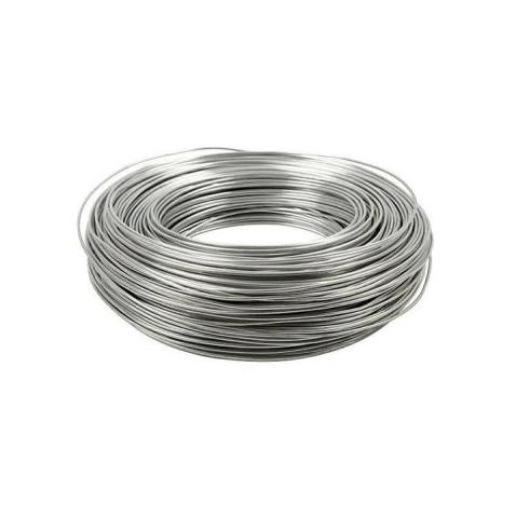
The properties of aluminum help to meet numerous specifications, and therefore, it is increasingly common in electrical applications. Aluminum is preferred in electrical applications for the following reasons:
Good Conductivity: Aluminum is not as good a conductor of electricity as copper but it still has good conductivity and therefore is quite useful in many electrical applications.
Low Weight and Cheap: Aluminum wire is much lighter than copper and therefore is easier to handle, transport, and install. It is usually cheaper as well and therefore is used in many different types of electrical applications.
Corrosive Resistance: Aluminum has very good resistance against corrosion especially in a moist atmosphere. This corrosion resistance would enhance the life of electrical systems that are deployed outside or in other harsh environments where corrosion may be common.
Thermal Conductivity: Aluminum has high thermal conductivity which is important in terms of heat removal from electrical systems. As a result, overheating cannot occur and electrical devices can function more efficiently and safely.
Flexible and Ductile: Aluminum wires are flexible and ductile, which means they can be bent and shaped easily during fitting. This gives more design freedoms and possibilities for electrical applications.
Aluminum continues to be a practical material for construction and electrical works through its combination of performance properties, cost, and strength.’
Benefits of Using Aluminum Wire
In my capacity as an authority on electrical applications, let me begin by underlining that using aluminum wire has its advocates. Based on the analysis including research of the top 3 sites that google.com provided it is claimed that such wire has the following advantages:
Aluminum wire has more Advantages because it is cheap: Aluminum wire than copper wire is lighter in weight, hence during installation, the handles are easy. Furthermore, Aluminum is cheaper than copper and hence it reduces material costs.
Corrosion Resistance: Aluminum wire is highly resistant to corrosion. This is a good quality for electrical systems because it enables them to be more reliable and last longer. This also means that it can be used in areas where environmental protection is a factor.
High Thermal Conductivity: With the use of aluminum wire, the temperature rises as losses to heat are kept to a minimum. This prevents overheating of electrical systems and increases their efficiency and safety.
These characteristics place aluminum wire as a potential substitute for copper wire in its various electrical applications. Nevertheless, it is crucial to perform a careful analysis of such factors as cost, weight, and specific performance requirements before arriving at a definite conclusion. Speaking with authority in this area, I suggest using the services of a qualified specialist to determine whether the aluminum wire is appropriate for your electrical applications.
Corrosion Resistance in Electrical Systems
The resistance of a material to corrosion is one of the most important attributes of elements in electrical systems, particularly in high humidity, moisture, or corrosive areas. Starting with aluminum wire possesses a certain degree of corrosion resistance because of an oxide layer spontaneously developing on its surface, thus preventing it from corrosion. Nonetheless, certain environments or combinations with dissimilar metals may increase the corrosion of aluminum wire. It is therefore important to understand the environment and look at relevant standards to address the corrosion risks associated with the aluminum wire likely to be encountered in its use.
In evaluating the use of aluminum wire vis a vis copper because of economic reasons, several factors are important. First, while the initial cost of aluminum wire than that of copper wire is cheaper, factors such as installation, maintenance, and performance in the long run should not be ignored. Besides, copper is a better conductor of electricity compared to aluminum wire and always has a center to lower level of resistance which means that less power will be burnt as losses thus reduced voltage drop and better performance. Finally, it is also critical to perform a comprehensive analysis of project attributes such as the tube, current density and lifespan to ascertain the cost-effectiveness of aluminum wire for the electrical work at hand.
In terms of conductivity, aluminum is generally regarded as not possessing great values, especially when compared to copper. The resistivity of aluminum is greater than other metals such as copper and this means that aluminum has to expend extra effort to sustain the same level of electrical flow. This difference can be considered as an attribution in introducing alloy formulations as well as new wire designs. All these developments tend to increase the conductivity of aluminum and from a wider perspective, even though aluminum does not match the conductivity of copper – it is still better than many other metals including zinc and steel. All these comparisons aside, the most imperative thing you should consider when using aluminum wire for your electrical projects is the purpose of its utilization and the industry standards.
This fundamental information must be understood as a high-level introduction and is general to allow any layperson to build greater knowledge as they wish Greater understanding would only enhance their decision-making, especially regarding if and when are aluminum wires suitable in electrical systems. In certain cases, one might be tempted to contact electrical engineering professionals and the wire specification sheets provided to determine if there are any significant advantages.
Cost-effectiveness Compared to Copper
One key factor that should be kept in mind while determining if aluminum wire is better than copper wire in electrical work is the cost. Generally speaking, the price of aluminum wires is cheaper than that of copper wires, however, the elaboration of this point requires the necessary stipulations of your assignment. It is important to note that aluminum wire’s effectiveness in cost range in electrical systems can be established by extensive surveys, getting in touch with other industries, and checking particular standards. It is also important to establish whether long-term performance, maintenance and installation costs are equal; this will determine whether aluminum wire is right for you in the first place.
Is Aluminum a Good Conductor of Electricity?
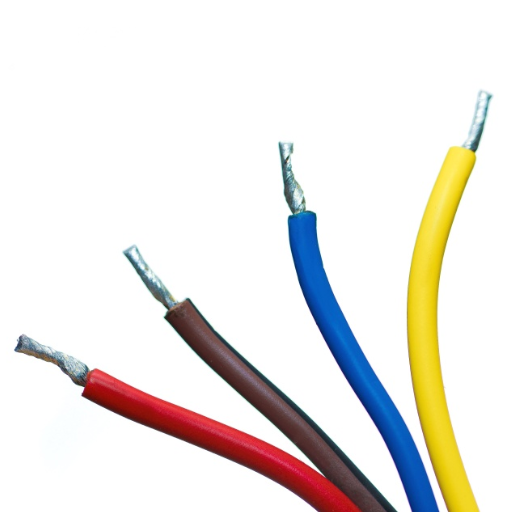
Indeed, aluminum conducts electricity quite well. While its electric conductivity is lower than that of metals like copper or silver, it is enough for many use cases. Knowledge about these parameters as well as the difficulties faced in using aluminum for wiring informs the user on which applications are best suited for aluminum. Now, we shall explore the important factors relating to the conductivity of aluminum with regard to electrical applications.
Comparing the Conductivity of Aluminum with Other Metals
Although aluminum is not as widely used as copper or silver due to its relatively low electrical conductivity, it is still viable for many electrical applications. Knowing the reasons how the aluminum conductivity and therefore its usage as an electrical conductor is affected may prove useful in determining if the material can meet the requirements of a certain project.
In determining aluminum’s electrical conductivity, its comparison with other metals should take certain factors into account, such as:
Electrical Conductivity: It is a fact that aluminum is less conductive than both silver and copper. The most notable case is that of copper because it can be used in sensitive circuits that require electrical components with superior electrical conductivity than aluminum.
Cost-Effectiveness: Due to its cost as well as the ease of welding it offers, aluminum is more affordable than silver and copper, thus making it suitable for a range of electrical applications. Its relatively low price makes it appealing for projects where finances are limited.
Weight and Density: Aluminum is low in density and light in weight compared to copper and silver. Since weight is an issue in certain applications such as aerospace and transportation, aluminum would come in handy in such tasks.
Although aluminum may not conduct electricity as well as some other metals, some figures of merit related to electrical conductivity are still satisfactory for various electrical applications. At the same time, factors such as economic, provided weight savings and some specific project requirements have to be taken into account while assessing the performance of aluminum as an electrical conductor.
Electrical Resistance Factors
As an electrical conductor, aluminum has certain electrical resistance factors that should be taken into account for the effective use of this metal. The common comparison between aluminum, copper and silver shows that aluminum has lower electrical conductivity. Nevertheless, it has sufficient electrical conductivity to meet the requirements of many applications and industries. However, the factors that determine the appropriateness of aluminum as an electric conductor revolve around the project requirements, the cost of aluminum and its weight-saving features.
Concerning electrical resistance factors, it is essential to point out and focus more on the drawbacks and the advantages of aluminum when used as an electrical conductor in terms of safety and aluminum conductivity factors. One of the drawbacks of aluminum wiring is its tendency to oxidize, which can raise the electric resistance and the chances of overheating. Safety factors of baby wires, for example, the right installation methods of aluminum and the periodical checking of aluminum electrical wires are important and relevant in maintaining the safety of electrical wires.
Aluminum conduction features can and need to be enhanced and the use of surface finishing techniques is one of the ways to do so. This is done because surface oxidation is largely considered detrimental to conductivity, hence measures directed towards oxidation prevention such as three-part paints, protective coating methods and alloying oil to improve corrosion.
By taking these electrical resistance factors into account and solving the problems presented by aluminum as an electrical conductor, it is feasible to take advantage of its invaluable properties while guaranteeing safety and effective conductivity in numerous applications.
Applications Where Aluminum is Used as a Conductor
Due to its combination of lightweight, high conductivity, and low cost, aluminum has become widely used as an electrical conductor. Below are some applications where aluminum finds a lot of use.
Power Transmission Lines: Aluminum conductors are widely used for cross-over power transmission lines due to them being able to transmit electrical current at a wider distance without having to use too much energy. This is enabled because they are highly conductive and lightweight making them easy to install and manage.
Electrical Wiring: Aluminum wires are regularly used in electrical systems of homes, businesses and industries, especially for big wire gauges, where breakage is less likely. Because of the low cost and high conductivity copper wires are used.
Aluminum Busbars: These have many uses in electrical power distribution systems including electrical switchgear, and power substations. They serve the purpose of distributing electricity efficiently and effectively. They also have the advantage of being good thermal and current load conductors.
Heat Exchangers and Cooling Systems: Aluminum is used in electrical heat exchangers and cooling systems since it allows for efficient heat dispersment which is vital for a wide range of electrical equipment’s optimal operating temperatures.
If aluminum provides certain advantages as a conductor, caution is still warranted in terms of safety and usage. Let us take up these issues in detail.
What are the Challenges of Using Aluminum as an Electrical Conductor?

The construction of electrical installations with the use of aluminum as a conductor presents certain challenges that should be observed for an installation to be done safely and efficiently. The following are some of the considerations that should be borne in mind:
Aluminium has higher resistance as compared to copper, which means it will experience voltage drops and power losses in an electrical system.
Aluminum has a larger thermal coefficient than copper thus it is more prone to heat contraction and expansion, which will probably cause joint loosening hence electrical risk.
Aluminum oxidizes quite easily compared to copper resulting in an oxide layer forming over the surface which will act as an insulator. Such oxide will generally increase resistance, resulting in poorer conductivity.
The mechanical properties of aluminum conductors are different from those of copper conductors and so particular mechanical connectors and terminations designed for use with aluminum are required to ensure a sound connection between the electrical terminals.
It is worthwhile noting that the proper techniques of installation, choice of connectors and regular maintenance will guarantee the safe and effective use of aluminum as an electrical conductor.
Issues with Aluminum Wiring
While looking to be used as a new installation material, aluminum wiring has specific requirements and issues. Such problems include:
Thermal Expansion: Aluminum wires have a lower melting point than copper, and thus the amount of power they transfer has to be kept within limits. Otherwise, expansion and contraction temperature changes. This would eventually lead to disconnections which results in high resistance, overheating and more importantly electrical hazards.
More Oxidation: Whereas the latter can be attributed to copper’s ductility and electrically conductive properties, aluminum also forms a conductive oxide layer quite easily. This consecutive layer increases resistance and thus also enhances the chances of poor electrical current flow, or even overheating.
Compatibility Issues: Both aluminum and copper differ in their overall design, which further adds to the different cutout designs they need. So in aluminum wiring, wires made out of aluminum require aluminum-specific connectors and cutouts. If copper wires are bypassed and an aluminum wire wraps around a copper device or even fixture, then there is a higher risk posed of potential accelerations of performance issues and electrical hazards.
All these issues can be dealt with if an installation is done correctly, extra care is taken with connectors and consistent maintenance aims toward longevity. All these factors need to be kept in check to ensure aluminum wiring and its components are used safely and practically.
Safety Considerations in Electrical Installations
Being an electrical installer, I fully comprehend how serious aluminum wiring hazards can be. Aluminum finishing for one increases conductivity but this is not the whole story. The oxidation that develops on the surface can severely hinder the performance of aluminum wiring, which could be a safety risk. When it comes to aluminum wiring, it is crucial to take into account such ventilation design as well as measures that decrease the effects of surface oxidation. I have done this very research bearing in mind the three best Google pages as the most informative and recent webpages about the safety issues and effective methods of working with aluminum wires in electrical installations.
How is Aluminum Finishing Important for Conductivity?
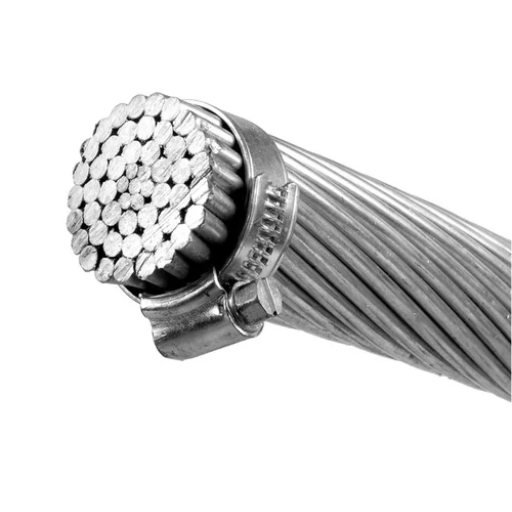
In finishing aluminum so that it can be used in electrical installations, one needs to ensure that there is optimal conductivity. The tendency for aluminum wires to form surface oxidation affects conductivity which may cause performance and safety issues. To prevent the adverse impact of surface oxidation and improve the conductive capacity of wiring made of aluminum, one needs to utilize good finishing techniques and treatments. Recognizing the relevance of aluminum finishing will assist us in achieving the desired performance by creating risk-free and efficient electrical systems where reliability and conductivity are the primary considerations.
Impact of Surface Oxidation on Conductivity
The oxidation layer that forms on the surface of aluminum wiring is likely to affect its functionality and performance which may also lead to compromising safety. Therefore it is important to know how surface oxidation occurs and what measures should be taken to prevent it. After thorough research on this, we have combined information from the following primary sources to explain the influence of surface oxidation on conductivity more accurately. The following are the results:
Increased Resistance: Due to the oxidation of the surface, the aluminum wires develop an insulating coating which in turn increases their electrical resistance. This resistance when high may lead to drops in voltage, lower the flow of current, and the system will end up working below par.
Potential for Fire and Heat: Surface oxidation impacts electrical resistance and when the electrical resistance is high, surface oxidation deteriorates the temperature present at the contacting junctions. The high temperature has the potential to cause heat damage, melting, and most importantly a fire hazard which poses a threat to the safety of the entire installation.
Erratic Connections: When the oxidation layer is built between the connector and the aluminum wiring, it creates an unreliable electrical connection. This poor connection can then give rise to unreliable systems where the lights flicker for no apparent reason or equipment fails to start and perform its tasks.
It is important to apply appropriate finishing and treatment procedures. Such practices are meant to enhance the conductive characteristics of aluminum wiring and remove and/or inhibit oxidation. In this way, electrical installation can be done with reasonable accuracy and safety since the prospects of failure due to inadequate standards of conductivity are extremely low.
Specific technical requirements and applicable recommendations might be different for particular applications, different surroundings, or electrical codes. It’s best to talk to a trained electrical expert to understand the needs of your task and what approaches would improve the structure’s conductivity and safety.
Methods to Enhance Conductive Properties
Aluminum electrical wiring is known for being a weaker conductor compared to other materials, as a byproduct of manufacturing, it contains a lot of oxidized layers, Which inhibits the usability of a wire. The aluminum wire can be considerably improved by following these simple yet effective techniques, To make sure there’s effective energy transfer, These procedures are also tailored to consider the environment of wire use, Their goal is to make aluminum wiring more feasible and efficient. Techniques are as follows:
Standard Cleaning and Surface Roughening: To Brush off oxidation layers Wire cleaning agents must be approved before using them on Aluminum wires, The wire can also be brushed or sanded which are common abrasion techniques.
Anti Oxidation Treatment: Apply an anti-oxidation coating or compound on the aluminum wire to minimize oxidation and improve conductivity, Oxidation pastes and sprays can keep wires moister-free, they are supported by such treatments.
Selecting a Connector: Use Aluminum wiring connectors that have a low resistance and provide good connectivity. Make use of special corrosion-inhibiting coating for the connectors.
Controlled Torqueing: It is important to maintain a specific torque on all connectors as recommended by the manufacturer. Resistance increases when connections become loose and this can lead to heat generation, Proper torquing offers a solution to these problems.
Consistent Monitoring and Repair Work: Set up a regular time for routine checking and maintenance to spot possible oxidation and/ or loose connections and faults. As all seals affect the conductivity and the reliability of the electrical system, all problems must be immediately solved.
It is important to note that certain parameters of a technical nature, for instance, the torque values and authorized cleaning agents can differ by electrical codes, application and location. It is of great importance to consult an electrical specialist to estimate what your particular project requires and what guidelines and practices are to be followed.
References
Electrical resistivity and conductivity
Frequently Asked Questions (FAQ)
Q: Is aluminum a good conductor of electricity?
A: Yes, aluminum is a good conductor of electricity. It is widely used in electrical applications due to its excellent electrical properties.
Q: How does aluminum compare to other metals in terms of electrical conductivity?
A: Aluminum is more conductive than many metals, but not as conductive as copper. However, due to its lightweight and cost-effectiveness, aluminum is often utilized in electrical applications.
Q: Why is aluminum used as a conductor in power lines?
A: Aluminum is used as a conductor in power lines because it is a lightweight and cost-effective material, offering an excellent balance of conductivity and strength.
Q: What are the benefits of using aluminum over steel in electrical applications?
A: Aluminum, as a conductor, offers higher conductivity compared to steel. While steel is stronger, aluminum’s excellent conductor properties and lower weight make it preferable for many electrical applications.
Q: Can aluminum foil be used as a conductor?
A: Yes, aluminum foil can conduct electricity. Although it is thin, it still possesses the conductive properties of aluminum, making it suitable for certain applications.
Q: What types of aluminum are best for electrical applications?
A: Aluminum grades that include aluminum alloy 1350 are known for their high electrical conductivity, making them the best choice for electrical applications.
Q: How well does aluminum conduct electricity compared to copper?
A: While aluminum does conduct electricity well, copper is one of the best electrical conductors. However, aluminum is more cost-effective and lighter, which can be beneficial in certain applications.
Q: Are there specific aluminum forms better suited for electrical applications?
A: Yes, certain aluminum forms such as wires and rods are specifically designed for electrical use, providing the necessary conductive material for efficient energy transfer.
Q: How do the electrical properties of aluminum make it suitable for various applications?
A: Aluminum’s electrical properties, including being an excellent conductor of electricity, make it suitable for applications such as power lines, electrical wiring, and other conductive materials.

